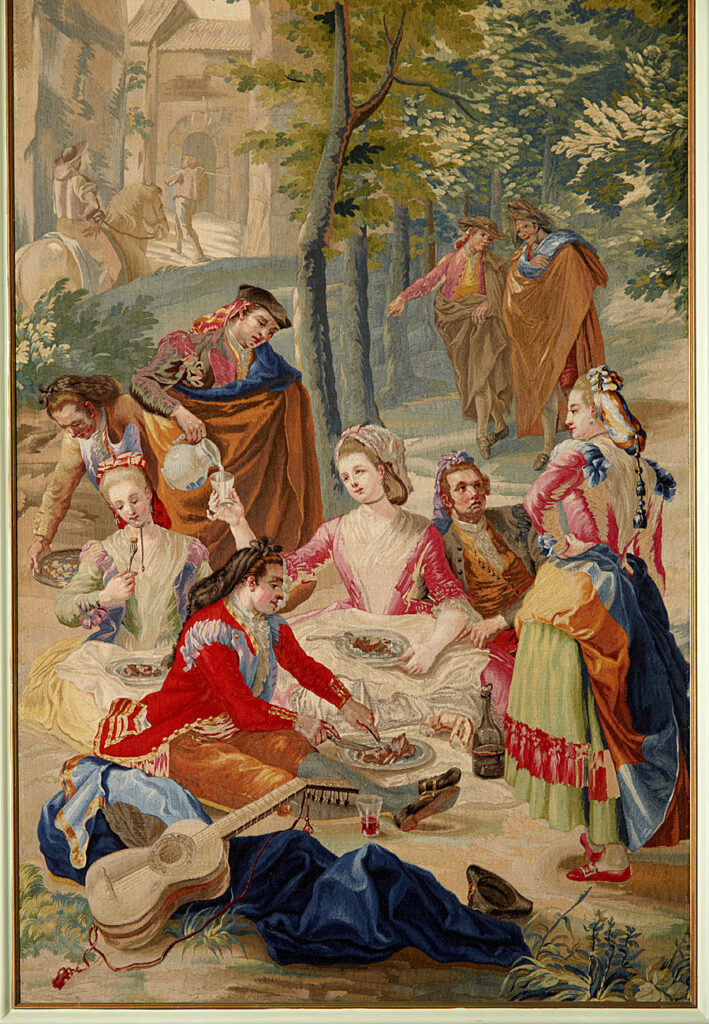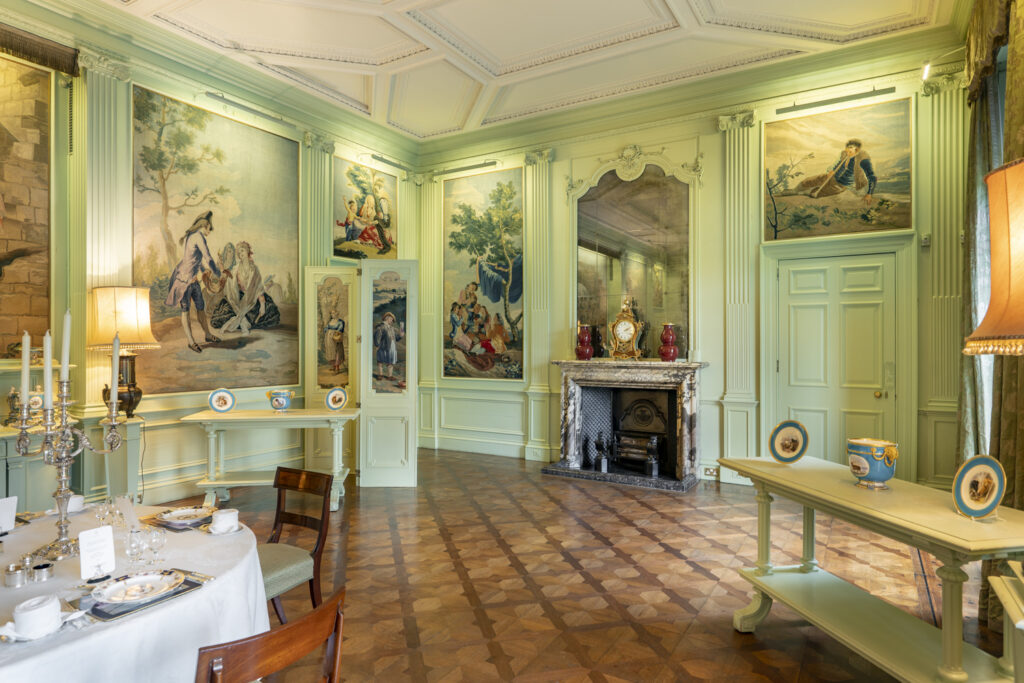The Dining Room Tapestries
The beautiful tapestries in the Dining Room of Sandringham House were given to the Prince of Wales (‘Bertie’) by King Alfonso XII of Spain. Bertie stopped in Madrid on his way back from India in 1876 and admired the fabulous tapestries the Spanish King had in his palaces at El Escorial and El Prado. The King offered to have some made for Bertie for his new home at Sandringham. The offer took six years to come to fruition and the tapestries arrived in 1882. So, the tapestries have been in place for about 140 years. They were specifically made for the Dining Room by the Royal Tapestry Factory in Madrid so, as such, are unique. They are a mixed weaving of silk and wool.

Royal Collections Trust believe that at least 4 of them are based on the works of Fransico Goya who was Director of the Royal Tapestry Factory from 1777 until about 1792 when he was appointed Court Painter to the King. He was prolific and many of his works were copied into tapestries at the Factory.
The Factory, which is still functioning today, can boast almost 300 years of experience in the production and restoration of tapestries. It was first established in Madrid after the Spanish War of Succession when Spain lost its territories in Flanders. As a result, in 1719, commercial ties between Spain and Flanders were cut and Flemish tapestries were no longer exported to Spain. So, Spain established its own factory.

Even today, the apprenticeship to become a master weaver at the Factory can take up to 20 years. Weavers are responsible for the selection of colours and the interpretation of the painter’s strokes. The weavers work from the back of the tapestry looking into a mirror to see the reflection of their work which forms the front of the tapestry. All the tapestries were, and still are, made by hand by craftsmen using high-warp looms. The weft threads are the crosswise ones which are passed by hand over and under the warp threads to make the pattern and cloth.
Written by House Guide Jane Morley
